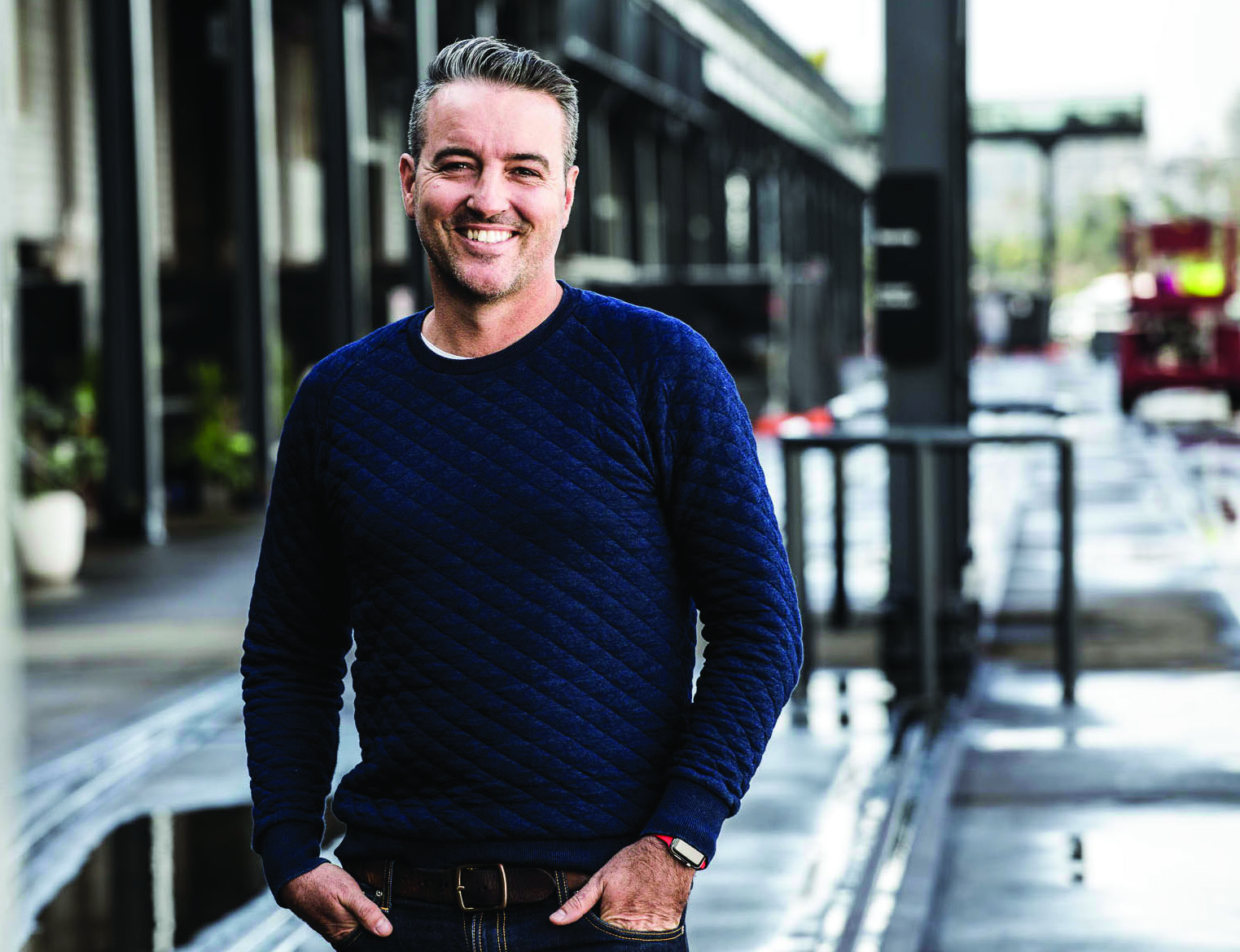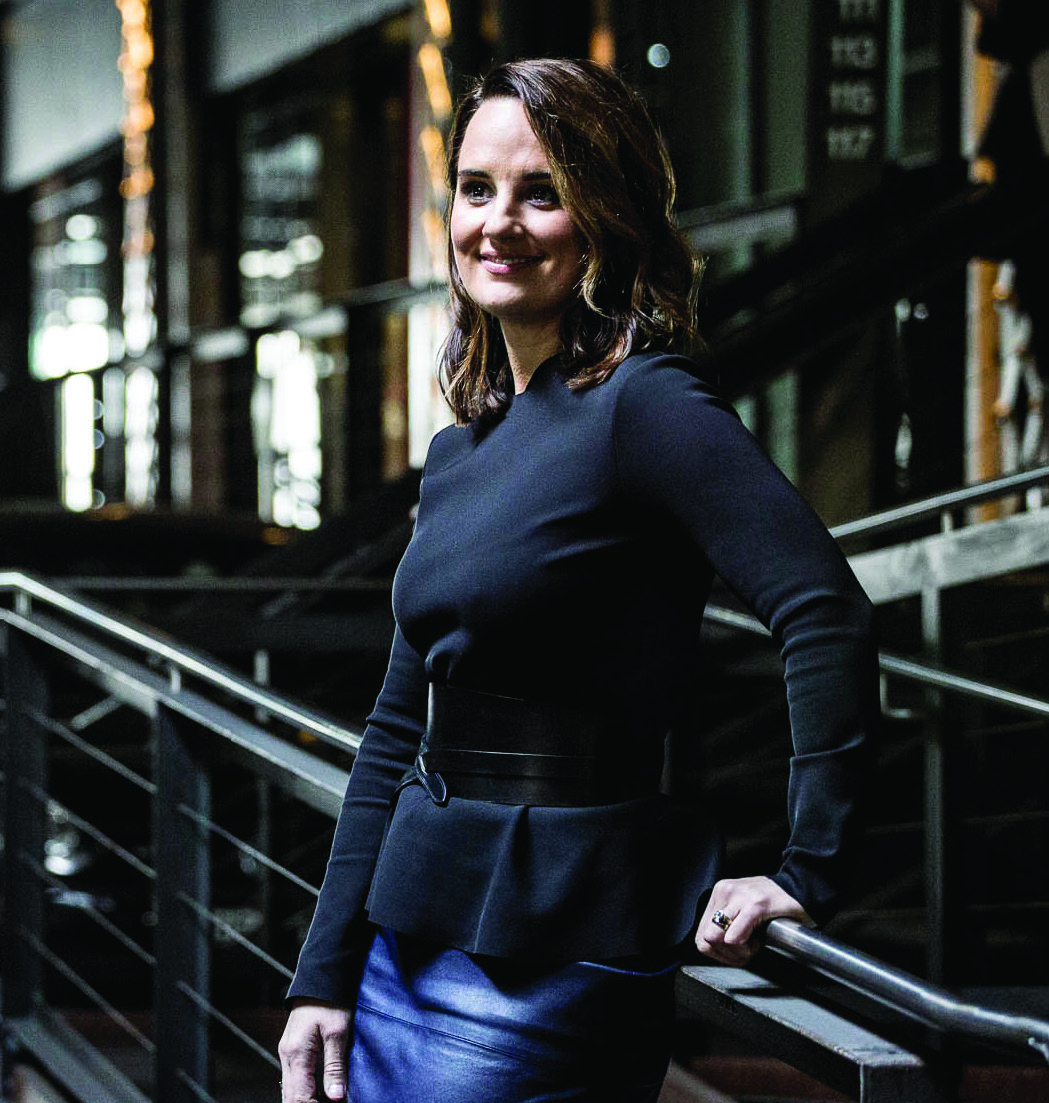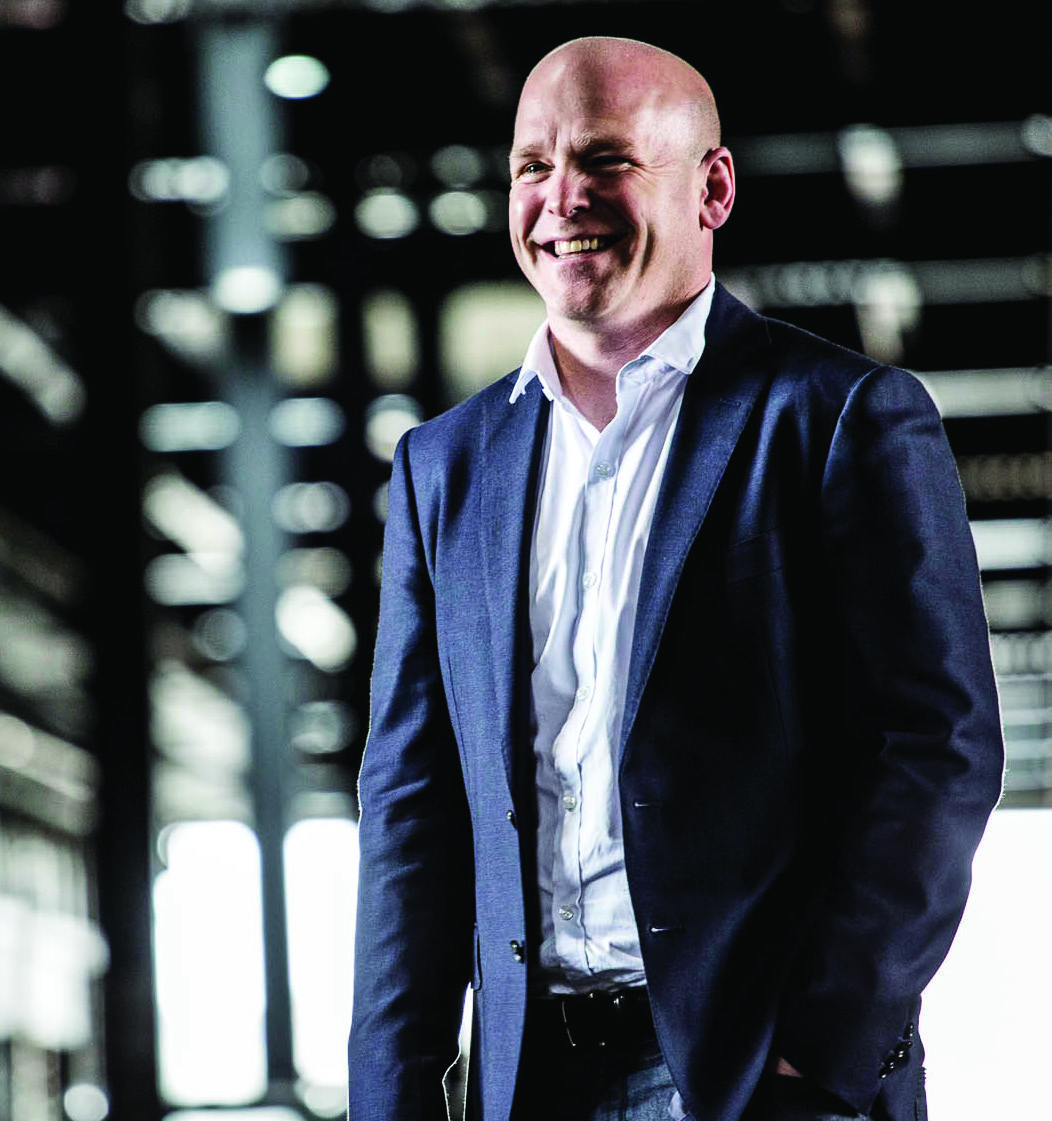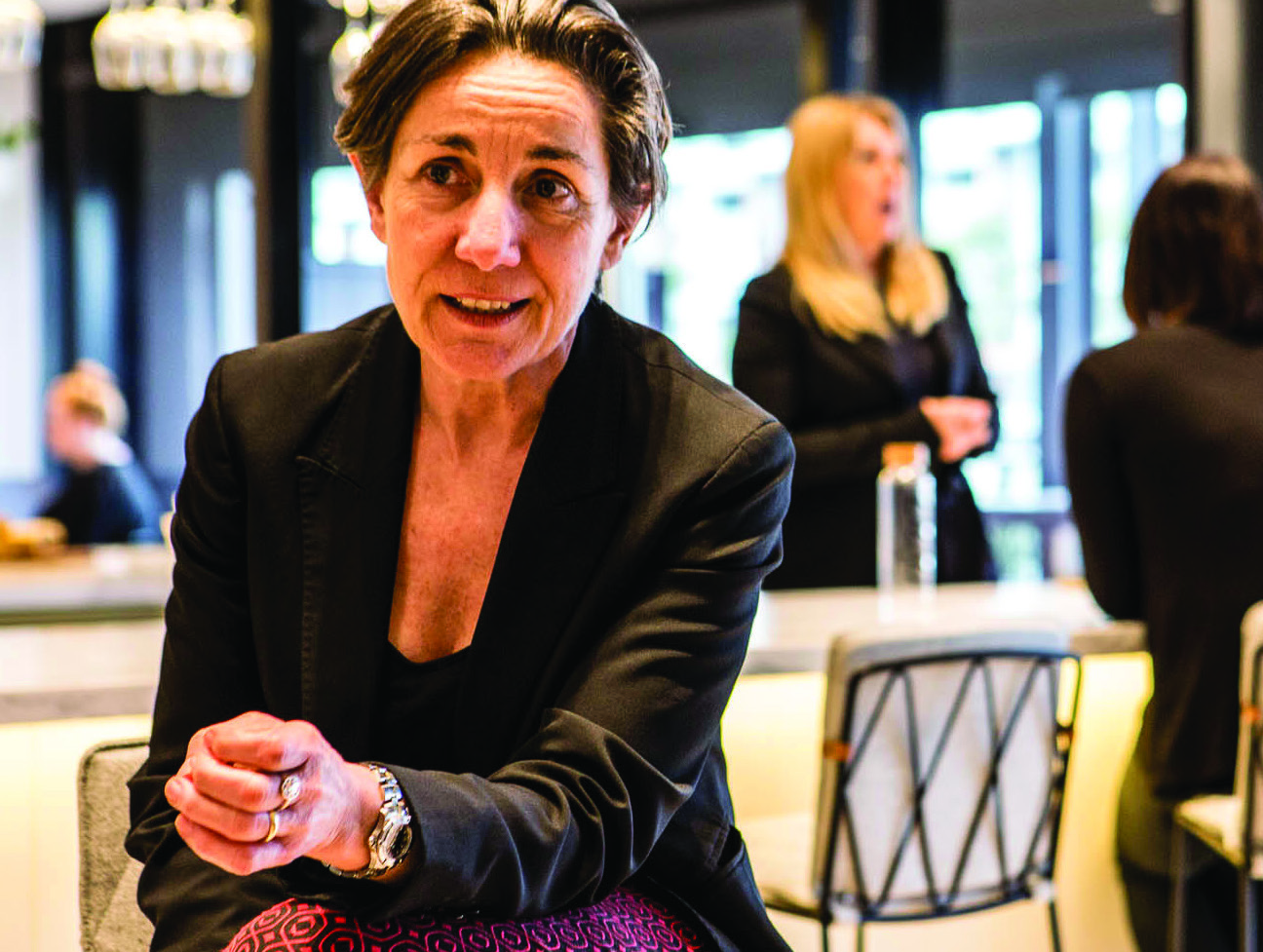
PURPOSE – Brent Duffy
Having a clear sense of purpose translates into a bigger, bolder, courageous aspiration in work and life. It provides the path forward to guide progressive action.
The DNA of our firm is built from our origins in psychology and entrepreneurship. We blend commercial nous with humanity and heart to have deep impact on the people and organisations with whom we work.
At Maximus we believe that understanding yourself with unflinching honesty is essential to realising your potential as a leader.
For me, it goes back to my background in rural NSW with my three brothers, my tradesman dad and my mum, who was always very busy looking after four boys. I was the first in our family to go to university. My parents saw it as the place to get qualifications, to get a professional job – perhaps a lawyer or a doctor or a scientist. What I worked out is that university was more than that. It is a place that teaches you to learn, and that’s what I loved. I’ve come to realise that my definition of hard work is not necessarily about putting in the most hours. Hard work is about openness to change, to do things differently and have the courage to try something new.
I remember one school holidays, when my mum – looking to entertain four boys – took us to the town courthouse and we sat in the gallery and watched a murder trial for a couple of hours every day. After each session, she’d ask us questions about the lawyers and the judge. My mum had a natural instinct to encourage us to explore things that we knew nothing about and led us on all those adventures to pique our curiosity. That curiosity built out our love of learning which – along with our parents’ lifelong example of charity work, service and strong sense of self – really influenced how I show up as a leader today. I genuinely believe that if you don’t know intrinsically who you are, you cannot permissibly expect others to follow.
Maximus has several ways to take leaders through intense journeys back to their own formative years – my own upbringing led me to understand a lot of critical things about bringing purpose to leadership, even though I didn’t know what I was learning at the time! We know that creating a deeper connection between personal fulfilment and work fulfilment builds visionary leaders who run companies that are equipped not only to cope with the tides of disruption, but the agility and brains to surf them.

CONVICTION AND CLARITY – Vanessa Gavan
Leading well is at its core about making good choices. It’s about thinking independently, rather than deferring to authority. It’s about adding value beyond the path the business is on. Creating a conviction that offers true clarity for all who are contributing to the cause.
Our journey to truly understand what it takes to create clarity and conviction in leaders was circular. For several years, we treated the education of strategy as a thinking job to be done. It wasn’t entirely wrong but there was much more to it. This was as much about the journey we needed to go on, as it was about the one we were to take our leaders on.
Deep strategic clarity was fundamentally important when I was a young psychologist, working for the right to contribute to strategic business conversations. Establishing Maximus, I knew we would have to be able to think and have perspective well beyond the norm to be the kind of progressive, credible firm we aspired to be. We spent years tackling every complex problem we could get our hands on and understanding every business model and theory known.
It wasn’t until later in our evolution as leaders ourselves, that the role of conviction became clear. Simply knowing what to think about was far from enough. Over the years we saw many different manifestations of strategic thinking in practice. Top executives who demonstrated incredible thinking but made really poor choices and compromises. Leaders who ran the business like it was a rolling forecast and the strategy was simply an evolution of how the numbers would unfold over a duration of time. Leaders who strategically gave the business a direction yet were completely oblivious of their role in creating a culture that would engender followership.
Today’s executives need to create high-level clarity, and it takes work. You have to understand all your choices and be able to bring data and insight to your decisions. You must ensure you have both a sense of purpose and an eye on the future as you do this.
I get the complexities and live with them too, this is no small thing: to bring conviction and clarity in tune requires the head and heart of you and your people.
We talk to leaders about intellectual and emotional understanding and the importance of creating the right narrative to bring a vision to life. In the past, there’s been a tendency among some leaders to think it’s fine to come up with a clever strategy and then bring in the creatives to sell the vision. In my experience this is a little limited. Intelligent workforces don’t want all the thinking to be done for them. They want to experience the process and understand the subtleties, and need to be involved to bring their own conviction to life. Working in with their own leaders to bring clarity to it all is inspiring and it also creates real momentum.
Strategy and culture must be equal and integrated. The best strategic leaders shape the path of the two together without compromise, backed by the conviction and clever choices that only come from having done the work.

CULTURE AND EMOTIONAL COMMITMENT – Mark Sowden
You need to engage the head and the heart to mobilise others. To be fulfilled, people need to be understood and belong. Mobilising people is both uniquely personal and environmental. Your people, your culture and your customers are the momentum that make it all happen. Underpinning all this is a simple truth that is too often ignored: leadership must be human.
Maximus has been doing a lot of work with leaders on emotional commitment. It’s quite easy for senior leaders to rationally understand the effect that authentic, emotional connection has on teams. It’s much harder for them to get to that ‘a-ha moment’, where they realise it’s not all about the rational approach.
I’ve worked with capable, intelligent and well-regarded leaders on this and they find it really challenging. It’s less about models, frameworks and content, and more about getting it to click for them – that this concept is beyond traditional leadership behaviour – and how they mobilise teams. What matters is how they’re being while they’re doing that.
When leaders truly make that connection between the head and the heart and understand how they can demonstrate their own emotional commitment in a very natural way, that’s when they create genuine followership from their people. When a leader connects and gets that kind of commitment behind them, the collective becomes a hugely powerful force. These leaders can activate people to new heights of performance. It’s not about incrementally adjusting the dial of a person’s capability, it’s about keeping cadence with the level of growth they can tolerate.
To earn the right to stretch someone in this way, you have to have their trust and best interests at heart – it’s a two-way emotional commitment. They have to know you see them, you are supporting them, but they are accountable. When this kind of connection happens, it focuses the mind, the drive, the heart and the skills of a person, stretching their performance beyond the normal curve.
I’m not saying that capability isn’t important, because it is. Maximus’ approach is that capability just gets you a ticket to play. When you make that authentic, emotional connection with your team and work in tandem, that’s when it starts making a difference to an organisation.
I was working with a senior leader well known for his strategic capabilities and his ability to set direction. I was encouraging him to find his own emotional connection: what he stood for as a leader, his purpose, the way he applied that and the way that he was mobilising his teams around it. I asked him to construct the narrative around that and after two or three goes, you could see the frustration building as he tried to verbalise it: who he was as a leader, how he wanted to be seen and what impact he wanted to have.
A couple of weeks later, he called me, really excited, and said, ‘Mark, I’ve got it, I get it! I understand what you’re saying and the place you’re trying to get me to. Let me describe this to you.’ At that point, I didn’t need him to say any more, because I could hear so clearly that he understood. When leaders reach that point, they have a new energy and enthusiasm. It’s not about the words, it’s how they’re being.
Traditionally, workplaces were used to leaders being protective around emotional connection. That’s not the case today. We demand leaders who are comfortable with who they are, are willing to be a bit vulnerable, to tell stories that connect to people and let people in. Leaders who operate like this – who are simply not worried about being judged for being human – bring themselves and their teams to life.

LEAVING A LEGACY – Chris Slattery
The world we’re all living in requires leaders to think beyond themselves as individuals and even beyond their organisations. Employees are demanding it: where do we fit in the world, how is our company working to ensure we leave it better than we found it? It’s a very big movement.
We’re working closely with leaders to help them envision and commit to a broader purpose, and a longer horizon. We bring real-world past and present examples to the experiences we create for this work. We have organisations that are setting shining examples of purpose right now, that we love to showcase and highlight how they are thriving.
One of the things we love to do is share the stories of successful and retired CEOs and board members who have lived a life of purpose. This can be illuminating because you are meeting people at a point where their strategic perspective is far and wide, and they have the headspace to reflect on what is and was important. It’s inspiring for others and really brings clarity to leaders in the midst of their careers as they find the courage to commit to achieving their own legacy.
Hearing from leaders who describe their fulfillment from making a positive, tangible difference is an incredible motivator. Two recent conversations with CEOs come to mind.
One leads a member organisation of health, emergency and law enforcement employees. He told me his connectedness to them – his customers – permeates his whole being. I asked him to fast-forward to his retirement speech: who would he want to speak at it and what would he want them to say? He got quite emotional talking about the members and said he hopes he lives up to their praise, as well as his own aim to do the right thing and help them gain financial security.
Another organisation we’re working with is in the infrastructure industry. They really take legacy personally and that’s resulted in incredible energy from the board to the CEO and every member of the executive team. They have a strong, long-term vision of the impact their project will have on the community, and it propels them through the complexity and long hours, and sees people tap into deeper levels of effort, motivation and capability. It shows me how powerful legacy is, right from the start.
Along with the shift in how CEOs are approaching it, is also a change in the language companies are using around legacy. ‘Purpose’, ‘legacy’ and ‘the broader stakeholders we serve’ are being written into their values and mission statements, where not so long ago, you would only hear about ‘profit’ and ‘shareholders’. When written down like that, it gets referred to when there are decisions to be made, so it permeates the organisation’s culture and becomes intrinsic to the company’s focus.
When we raise awareness in leaders about legacy, we ignite the passion that there’s a much more enduring impact they can have beyond the next quarterly results. Once they tune into that prospect, it clears the path for leaders to become more focused on impact, purpose and performance.
This article was originally published in the 4th edition of M Magazine, an exclusive print magazine aimed at inspiring and driving change through Australia’s executives and heads of HR.
Related Insights

The Changing Landscape of Sales Leadership
On my recent holiday I read Dan Pink’s new book, To Sell is Human. The chapters argue the growing importance of sales skills in both traditional and non-traditional sales roles. Dan’s perspective runs against the viewpoints of many that believe the art of sales is in decline. In a world full of information that is so easily accessible through technology, many think digital and social marketing is replacing the role of the traditional “salesman”

Understanding the Importance of Emotional Intelligence
Growing research over the past 15 years suggests that another key ingredient distinguishes good leaders from great leaders – Emotional Intelligence or EI. Having a good understanding of others’ EI will help you to attract, retain and grow a robust leadership pipeline.

Success and Survival — It’s All in the Mind
There are many stories of individuals who have overcome unbelievable odds, and through inner-strength, have pulled themselves to safety. But why? What makes these people different? Does this ability to survive translate into the business world?